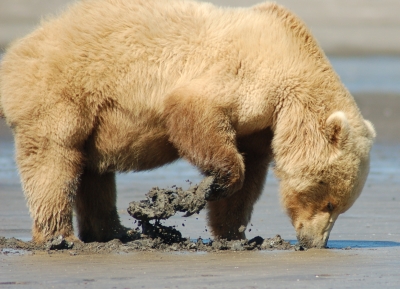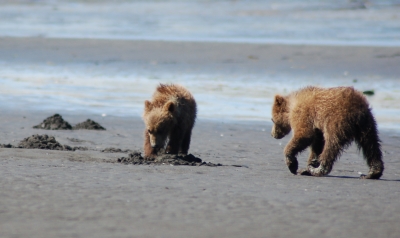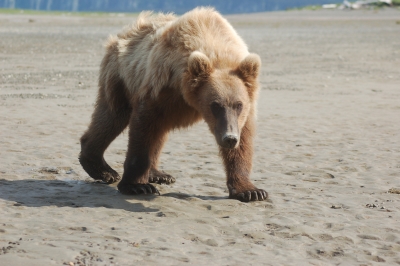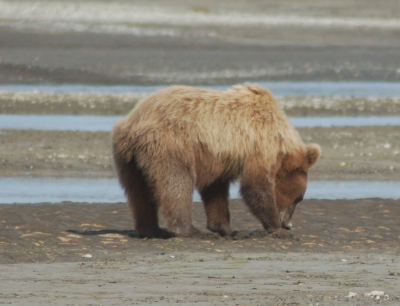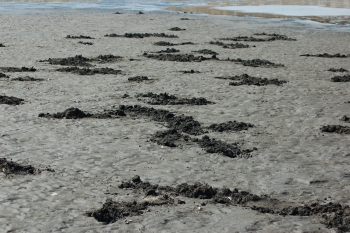 Clams are an important part of the grizzly bear diet on the coast of Alaska. Bears use their amazing sense of smell to locate clams under the sand. The extreme tidal variations in Alaska allow miles of the ocean floor to be uncovered at low tide – an excellent opportunity for clamming.
Clams are an important part of the grizzly bear diet on the coast of Alaska. Bears use their amazing sense of smell to locate clams under the sand. The extreme tidal variations in Alaska allow miles of the ocean floor to be uncovered at low tide – an excellent opportunity for clamming.
 You can see this female grizzly bear sniffing the surface of the sand to locate her next clam.
You can see this female grizzly bear sniffing the surface of the sand to locate her next clam.


